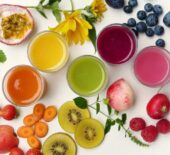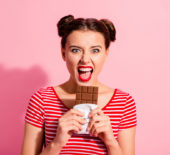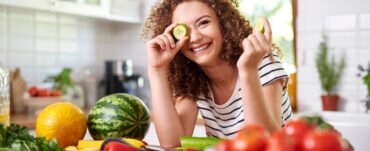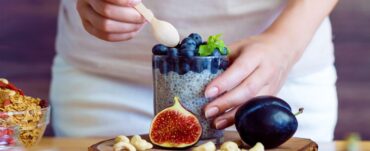Pump your iron! I am not talking about lifting weights but the mighty mineral iron. Iron forms an important part of haemoglobin or the protein in your red blood cells. Red blood cells allow oxygen to be carried throughout your body which every cells needs to survive.
Without enough iron you are more likely to get sick as iron plays a role in keeping your immunity working at an optimal level. Thirdly, iron is part of muscle protein myoglobin. This is why getting enough iron is important to allow muscles to work well and for you to achieve results from your training. If the body becomes really low in iron it may lead to iron deficiency. Symptoms can include tiredness, fatigue, lethargy and low energy and endurance, decreased tolerance to cold and getting sick more often.
How much do you need? Men aged 19 years and over need 8mg and women 19-50 years need 18mg of iron a day. This amount decreases to 8mg/day after 50. For women breastfeeding and during prenancy these amount differ again.
There are two different forms of iron, one from animal (haem) and one from non-animal sources (non-haem iron). Eating haem ion can be less complicated than eating the non-haem sources as there are certain ‘rules’ which can increase or decrease the iron from being absorbed. Let’s start with some examples of haem iron and how much iron this would give you:
- Ground, cooked meat, lamb or beef (75g) = 1.3-2.1mg
- Cooked beef, various cuts (75g) = 1.4-3.3mg
- Cooked lamb, various cuts (75g) =1.3-2.1mg
- Cooked chicken, various cuts (75g) = 0.4-2.0mg
- Cooked pork, various cuts (75g) = 0.5-1.5mg
- Cooked turkey, various cuts (75g) = 0.3-0.8mg
- Tuna, canned in water (75g) = 1.2mg
The non-haem aka non-animal sources include:
- ½ cup of cooked spinach= 2-3.4mg
- ½ cup tomato puree= 2.4mg
- ½ cup cooked Lima beans = 2.2mg
- 6 spears of raw asparagus= 2.1mg
- 1 medium cooked with skin potato = 1.3-1.9mg
- ¼ cup dried apricots = 1.6mg
- ½ cup of kale = 1.3mg
- ½ cup of tomato sauce = 1.2mg
What can you do to optimize non-haem iron absorption?
Vitamin C is non-haem iron’s best friend. Try to eat or drink vitamin C food or drink with non-haem iron increases absorption in the body. This could be achieved by drinking half a cup of no added sugar orange juice or adding some capsicum. Another way to improve the absorbtion of non-haem iron is to pair it with a haem iron source.
What can hinder non-haem iron from being absorbed in your body?
- Wholegrains and legumes have a compound called phytic acid which binds to iron then drags it out of your body preventing proper absorption.
- Avoid drinking coffee or tea with the non-haem iron sources as these drinks contain tannins and phytates which hinder proper iron absorption.
- Calcium can stop non-haem iron from being absorbed well. Try taking calcium supplements at a different time to when you eat non-haem iron sources.
Reference:
- Saunders AV, Craig WJ, Baines SK, Posen JS. Iron and vegetarian diets. The Medical journal of Australia U6 - ctx_ver=Z3988-2004&ctx_enc=info%3Aofi%2Fenc%3AUTF-8&rfr_id=info%3Asid%2Fsummonserialssolutionscom&rft_val_fmt=info%3Aofi%2Ffmt%3Akev%3Amtx%3Ajournal&rftgenre=article&rftatitle=Iron+and+vegetarian+diets&rftjtitle=The+Medical+journal+of+Australia&rftau=Saunders%2C+Angela+V&rftau=Craig%2C+Winston+J&rftau=Baines%2C+Surinder+K&rftau=Posen%2C+Jennifer+S&rftdate=2013-08-19&rfteissn=1326-5377&rftvolume=199&rftissue=4+Suppl&rftspage=S11&rft_id=info%3Apmid%2F25369923&rftexternalDocID=25369923¶mdict=en-US U7 - Journal Article. 2013;199(4 Suppl):S11.
- Iron Deficiency; Highlights from the November 2007 Journal of the American Dietetic Association. Hematology Week. 2007.








